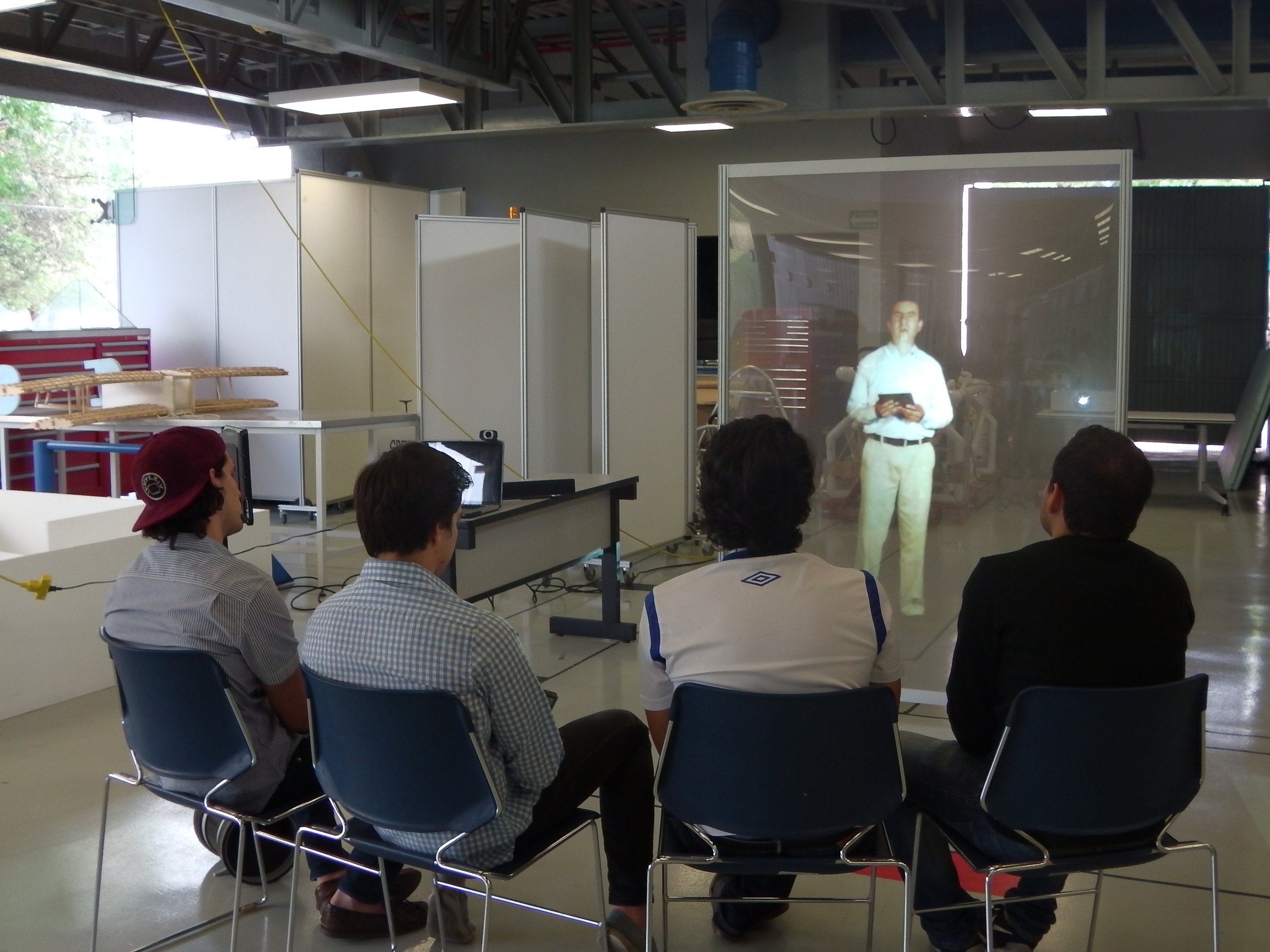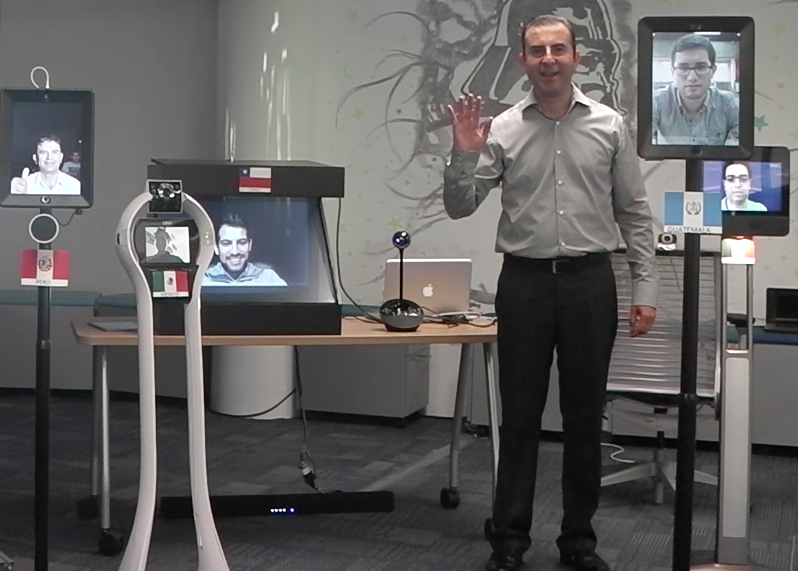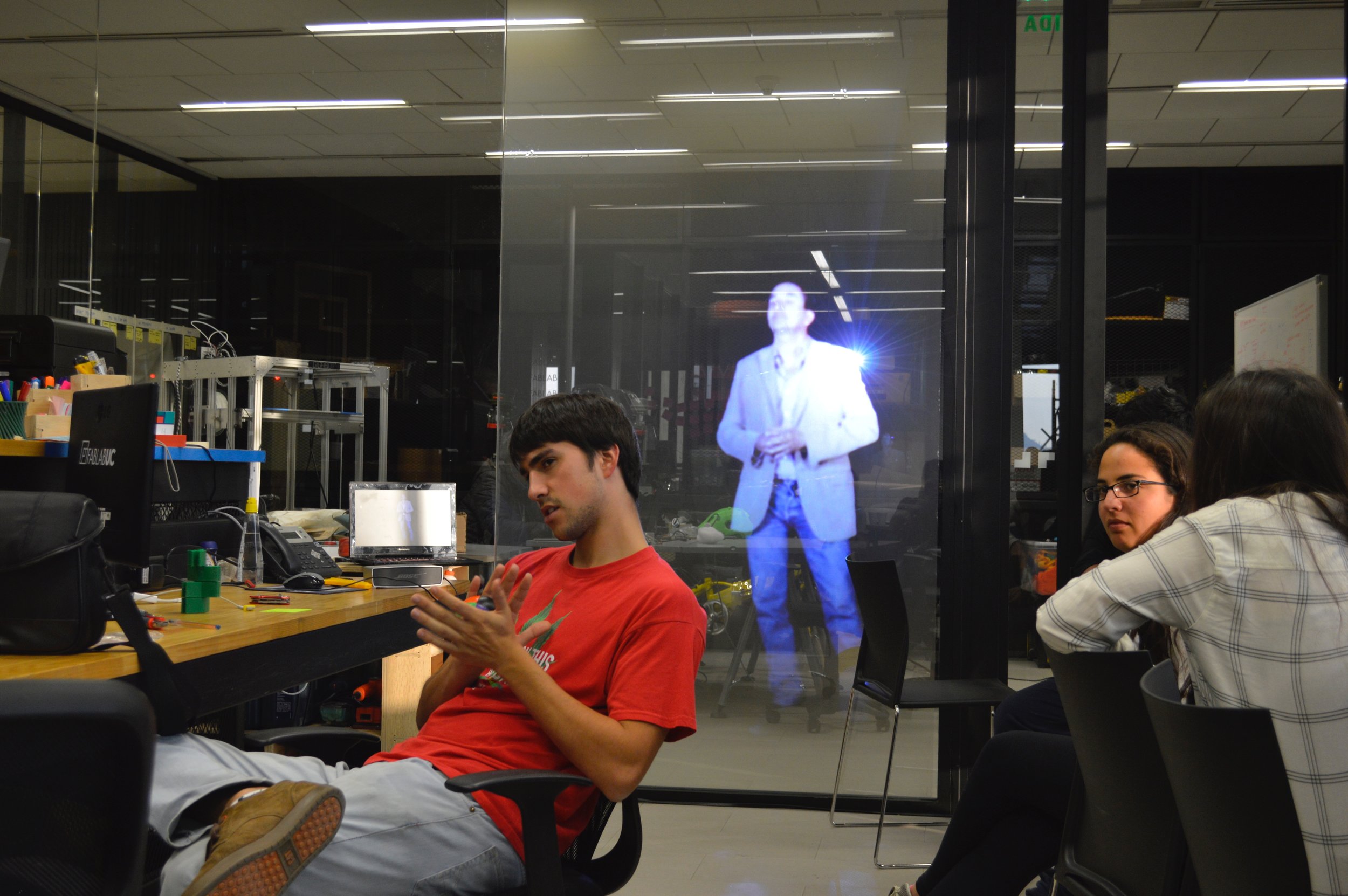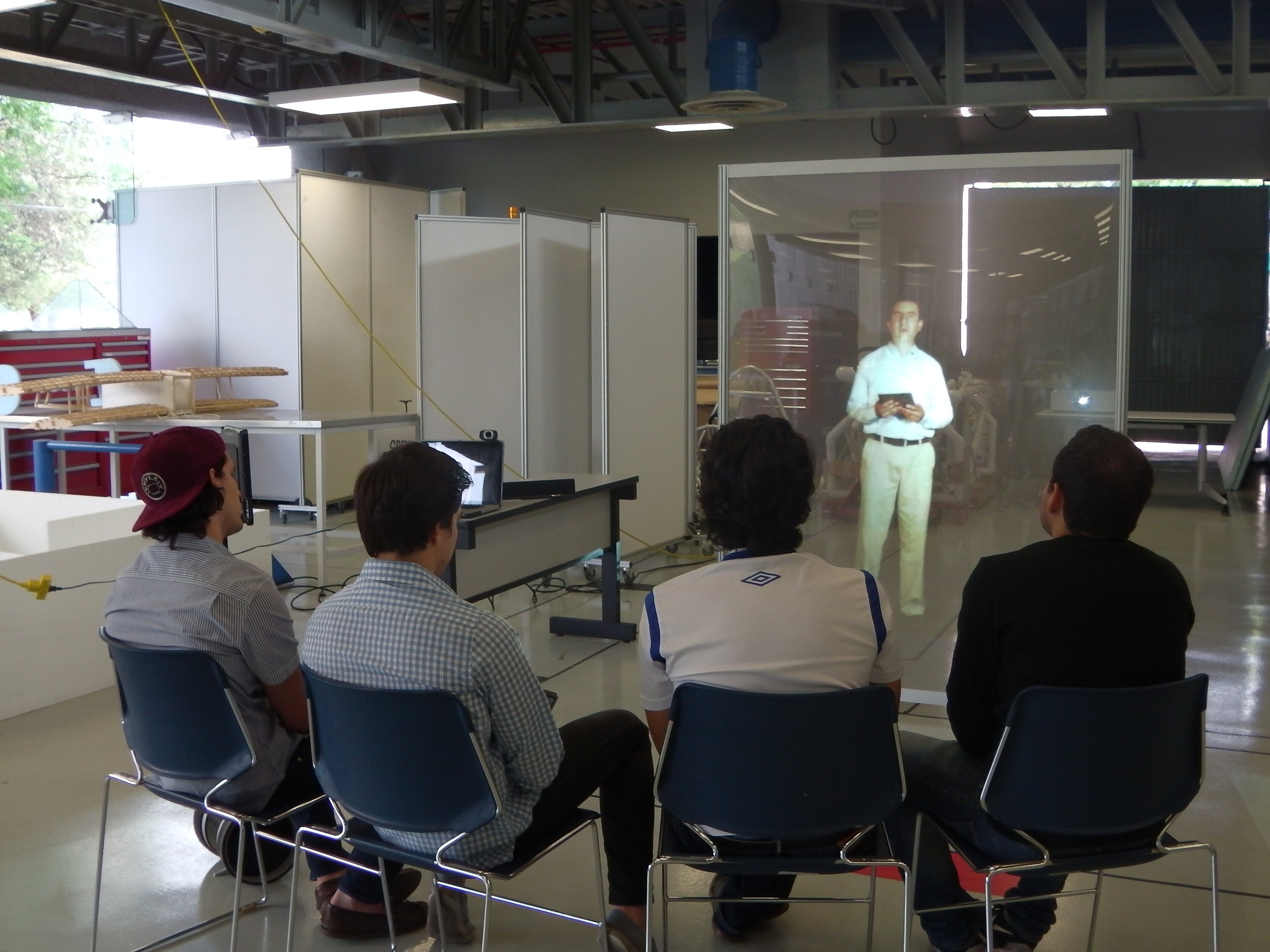By Luis Eduardo Luévano Belmonte
luevano@itesm.mx
Moving towards accessible, personalized and quality education is of great interest to the international community and, for this reason, there are several alternatives for offering distance education. Based on this premise, personalized and immediate attention is an area of opportunity that many education-oriented technology institutions and companies have begun to explore.
Project “Avatar Professor” is a telepresence model developed at Tecnológico de Monterrey. This model offers the experience of having a professor in holographic form in the classroom, providing virtual mobility from anywhere in the world with real-time, personalized interaction with students, delivering a social presence in the classroom, even though he/she is not physically present, thus humanizing distance education. Being able to connect via telepresence robots and/or real-time holographic projections to professors, specialists, doctors, mentors, etc., offers the opportunity to generate an advanced communication channel.
This project has been very well accepted in educational and business communities, because it creates an important expectation regarding its potential for development and scalability. Professional colleagues from around the world, who are immersed in both educational and business environments, have shown interest in replicating this proposal, since to them it represents a solution to several problems they face in their daily lives, for example, elevated transportation costs, insecurity, mobility, geographic dispersion of their venues, and personalized, real-time remote attention.
data-animation-override>
“Being able to connect via telepresence robots and/or real-time holographic projections to professors, specialists, doctors, mentors, etc., offers the opportunity to generate an advanced communication channel.”
The main benefit of this project consists of offering solutions that are innovative, low-cost, easily scalable and adaptable to different learning styles, specifically in the area of education. Being able to connect via telepresence robots and/or real-time holographic projections to professors, specialists, doctors, mentors, etc., offers the opportunity to generate an advanced communication channel, where any teacher, regardless of the academic level or subject he/she teaches, can provide personalized attention to his/her students. A telepresence model can help solve problems such as transportation costs, insecurity, mobility, geographic dispersion, and personalized real-time remote attention
Being able to see a life-sized holographic representation of the teacher, generates a range of diverse emotions in students. Having the possibility of interacting in real-time with the teacher, as if he/she were physically present, makes students feel that they are truly accompanied in the learning-teaching process, unlike traditional videoconferences where the teacher is presumably absent.
data-animation-override>
“A telepresence model can help solve problems such as transportation costs, insecurity, mobility, geographic dispersion, and personalized real-time remote attention”
An experience of the implementation of project “Avatar Professor” was “iChallenge”, where, through our model, five universities from four countries (Guatemala, Peru, Chile and Mexico) connected in a sustainability challenge. “iChallenge” consisted of building, in a week, a sustainable electricity generator from recycled materials, with remote tutoring through the “Avatar Professor” telepresence model. At the end of the challenge, the products manufactured by the students were donated and installed in vulnerable areas of each region.
The pedagogical approach used was challenge-based learning and active learning, through the innovative use of telepresence, which made it possible to engage in a truly international and collaborative effort: teacher-teacher, teacher-students, expert-students, student-student. Students strengthened key competencies for their employability and valuable knowledge to improve their communities. Through the telepresence model students from four countries collaborated in the construction of a sustainable electricity generator.
Now, more than ever, the commitment of making “Avatar Professor” a more human and accessible experience, is even greater. I believe that with this model we can help to take quality education to places that are not easily accessible, owing to geographical circumstances, costs or insecurity.
data-animation-override>
“Through the telepresence model students from four countries collaborated in the construction of a sustainable electricity generator.”
We will continue to explore new technologies and search for opportunities to perfect our model. If you have any concerns or suggestions regarding this proposal, please do not hesitate to contact me by email.
About the author
Luis Eduardo Luévano Belmonte, a Professor from the business area at Tecnológico de Monterrey, is committed to innovation in and out of the classroom. He is the creator of the “Avatar Professor” model and received the Silver Award, Best Use of ICT, QS Reimagine Education 2016.
This article from Observatory of the Institute for the Future of Education may be shared under the terms of the license CC BY-NC-SA 4.0 
)
)





)